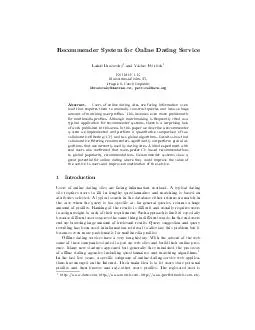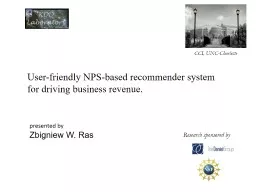PDF-Recommender System for Online Dating Service Lukas Brozovsky and Vaclav Petrcek KSI MFF
Author : alida-meadow | Published Date : 2014-12-03
25 Prague 1 Czech Republic lbrozovskycentrumcz petricekacmorg Abstract Users of online dating sites are facing information over load that requires them to manually
Presentation Embed Code
Download Presentation
Download Presentation The PPT/PDF document "Recommender System for Online Dating Ser..." is the property of its rightful owner. Permission is granted to download and print the materials on this website for personal, non-commercial use only, and to display it on your personal computer provided you do not modify the materials and that you retain all copyright notices contained in the materials. By downloading content from our website, you accept the terms of this agreement.
Recommender System for Online Dating Service Lukas Brozovsky and Vaclav Petrcek KSI MFF: Transcript
Download Rules Of Document
"Recommender System for Online Dating Service Lukas Brozovsky and Vaclav Petrcek KSI MFF"The content belongs to its owner. You may download and print it for personal use, without modification, and keep all copyright notices. By downloading, you agree to these terms.
Related Documents













